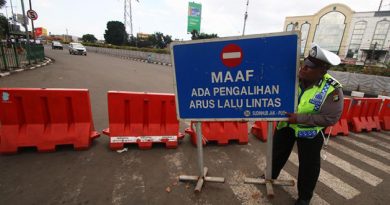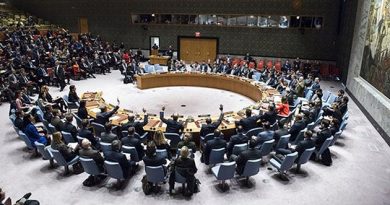What US Korean War Veterans think of the Trump-Kim Summit

Whatever the potential outcome, President Donald Trump’s summit with North Korean leader Kim Jong Un in Singapore last week was historic, marking the first-ever meeting between a sitting U.S. president and a head of state of the rogue Asian nation.
And while the perspectives of South Koreans, the Chinese, the Japanese and even the Russians have been analyzed, little attention has been paid to the community whose intervention enabled South Korea to become a democratic and open country: American veterans of the Korean War.
“It’s time for a real peace treaty after 66 years in a state of war in which nobody wins and everyone loses,” said former U.S. Navy petty officer Jack Keep, who served aboard a ship patrolling the North Korean coast in 1953.
Speaking to CNBC via email, the 83-year-old veteran was hopeful. “The people of North and South Korea, as well as we veterans, would welcome a peaceful outcome to these talks. The North Korean people have been suffering desperate poverty all these years.”
Still, Keep was cautious, noting the need for further discussions. “We who served during the Korean War remember that it took two years of talking to arrive at an armistice in the ’50s, and again with Vietnam,” he said. “We are well aware that caution is needed in dealing with the communists.”
The Forgotten War
More than 35,000 Americans perished on the Korean peninsula between 1950 and 1953, in a fight that pitted the communist North Korea, backed by China and the Soviet Union, against the U.S. and United Nations-backed South, who feared a takeover by the North.
An armistice was signed on July 27, 1953, but there was no peace agreement — meaning that the two countries are still officially at war.
Korea is often referred to as “the forgotten war” because of how little attention it received during and after the conflict. Korea did not galvanize U.S. popular support or protest the way World War II or Vietnam did, and then-President Harry Truman termed it a “police action” under the auspices of the UN.
U.S. forces constituted roughly 90 percent of the 16-nation UN coalition that sent troops into the Koreas, which had been split as a result of the Cold War. The number of both North and South Korean casualties approached 3 million, the majority of whom were civilians. The peninsula remains divided along the 38th Parallel North, the most heavily militarized border in the world.
Now, the document signed by Trump and Kim outlined pledges to work toward lasting peace on the Korean peninsula, commit to “complete denuclearization” there and to recovering and repatriating the remains of American prisoners of war and those missing in action who never made it home.
‘Almost unbelievable’
“The rapidity of all that’s transpired thus far is almost dizzying,” said Tim Whitmore, an 82-year-old veteran who served as an Air Force medic in Korea in 1954. Speaking to CNBC from his home in Virginia, Whitmore, who is also national director of the Korean War Veterans Association (KWVA) of America, expressed both hope and apprehension.
“The security of the entire world is in balance here and I am more than a little uneasy when the two major players fit the image of cartoon characters in many ways,” he said.
The veteran applauded President Trump’s “straightforward efforts to bring lasting peace” but said he was at the same time cautious about what price must be paid. “The position of Kim Jong Un is, for me, almost unbelievable,” he added, noting that he could not recall any major commitment made by the North Korean government that’s ever been met.
Bringing the troops back home
U.S. forces in South Korea are now preparing for the North to hand over the remains of an unknown number of U.S. and allied forces missing since the war. Of the 7,747 Americans that are still classified as missing in action (MIA), about 5,300 of those were lost in North Korea.
This breakthrough, agreed during the Singapore summit, carries tremendous weight and emotional importance for both the surviving Korean War veterans and the families of those who were lost.
Larry Kinard, a former KWVA president who was a first lieutenant with the 3rd Infantry Division in Korea in 1952 as a forward observer, made several trips to South Korea in recent years and worked with families whose relatives had been killed in action (KIA) or MIA during the war.
“Frankly, I had given up hope of ever being able to get back in North Korea to search for the estimated 5,300 whose remains are still there,” said Kinard, now 89 and living in Fort Worth, Texas.
“What is happening now gives some hope that we may be able to recover those who had to be left behind.”
courtasy : CNBC
photo : CNBC.com
[social_warfare buttons=”Facebook,Pinterest,LinkedIn,Twitter,Total”]



